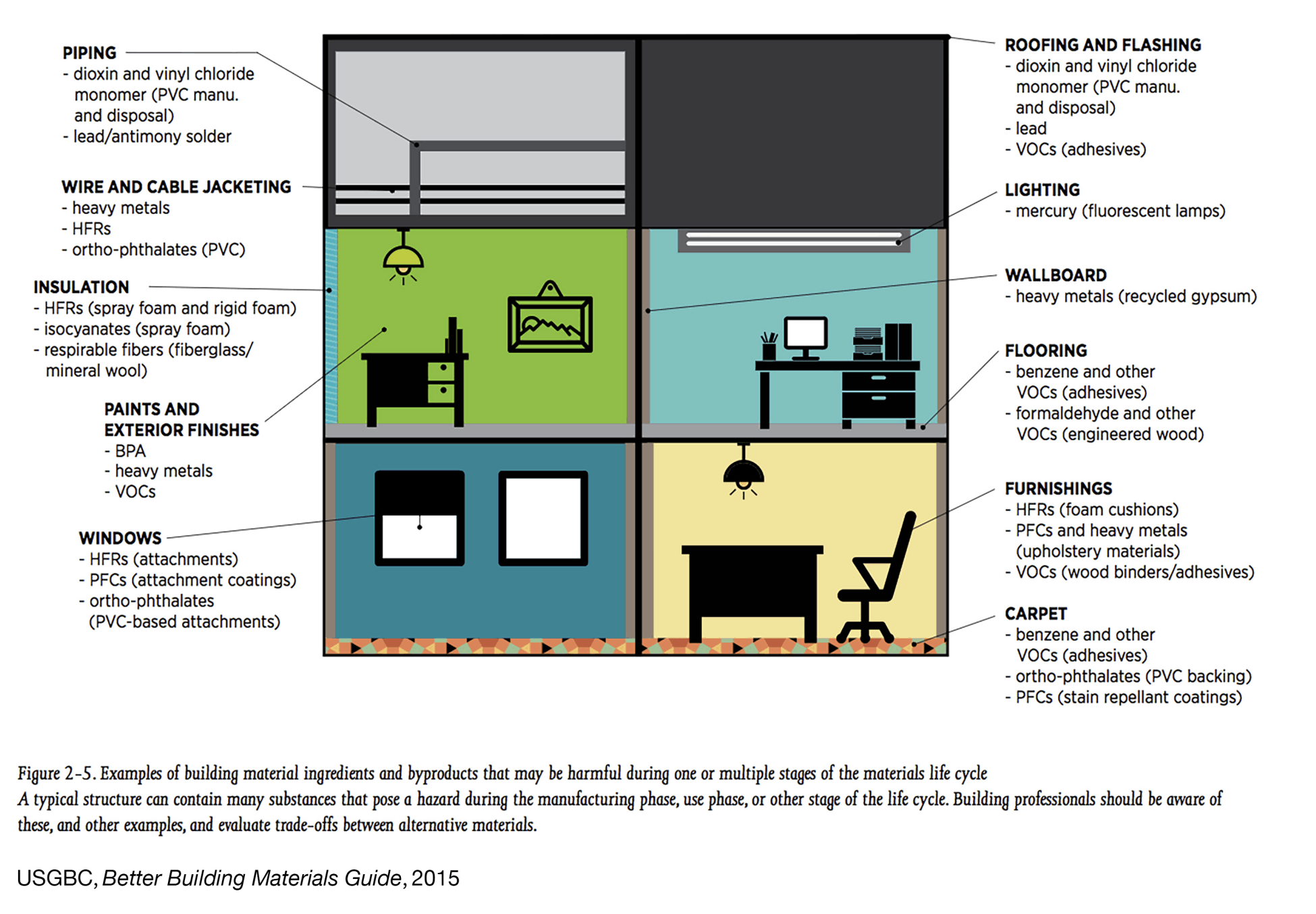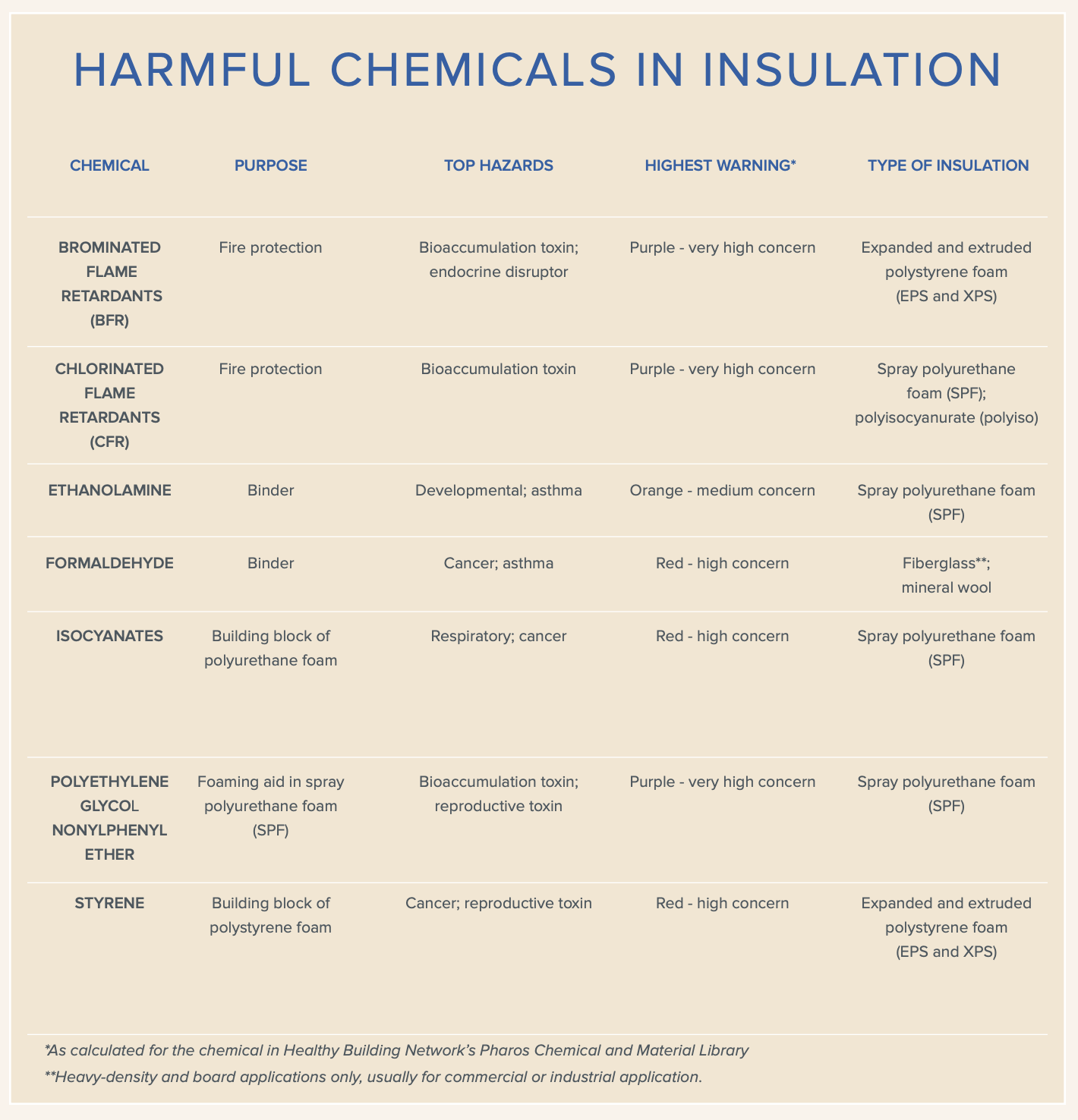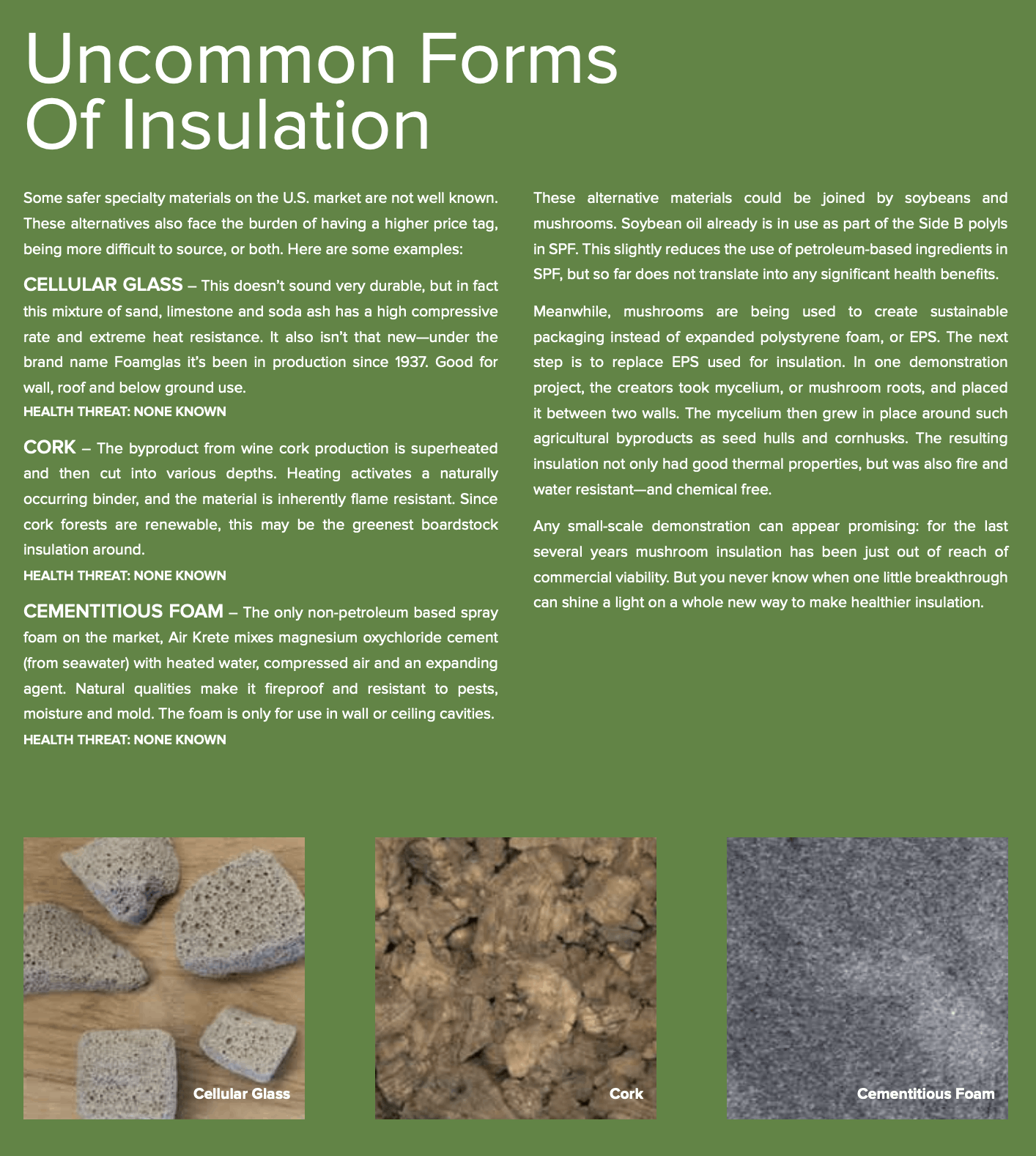
Materials used in constructing structures such as homes, barns, stables, etc. can have toxins that are often not discussed. What materials should we be using and which should we not?
The use of these materials is largely a new one, so the effects have not been studied. Thinking back to things like mercury or lead, which were used for centuries and decades before some of their health effects were known. Think of asbestos as another example. It can take decades to discover a particular health effect, ususally first in the workers who work with it every day, and then often years or decades more before we decide to stop using it in our environments. Most of the chemicals we add to things now for various reasons; softeners in plastics, fire retardants in furniture, etc. have largely not been studied for their health effects. Most of the exact chemicals aren't even disclosed.

This isn't an isolated issue, where a manufacturing plant produces some emissions in to the air or some pollutants in to the water. These chemicals are being intentionally added to nearly everything we use these days. Some are likely harmless, but many are not. Here is a list of some of the places the most certainly toxic materials enter our living spaces.

While it can be overwhelming to consider, as we build our homesteads there are choices in materials that we will be making. Wherever possible, do consider natural products like untreated lumber, stone, clay or lime plasters, mineral paints, copper pipes over pex, rockwool instead of foam, shiplap instead of plywood, etc.. Not only will this limit the toxins in our completed home, but it is often during construction; when we are cutting, gluing, spraying that we are exposed to the largest volumes of these substances. Some will offgas or "cure" to some degree in days or weeks, but many, like plasticizers will continue to decay and emit VOCs for their entire lifespan.

The "green" building movement has focused on energy usage via insulation and air tightness. While this may be green in terms of carbon usage, it is quite the opposite in terms of human health. Indoor air is widely cited to be multiples, if not orders of magnitude, more polluted than outdoor air. And the products that we are using to achieve these goals are often tremendously bad for us. Luckily there are alternatives.

Here are some alternatives to consider, though keeping in mind they are not all equivelant in terms of R value, ability to handle moisture and pests.

There are some very outside the box choices you can consider as well.

Timeline of building materials, toxins in building materias images from New School "Healthier Materials & Sustainable Building" course https://healthymaterialslab.org/learning-hub/e-learning-online-certificate-program
Chemicals in rooms of our homes image from US Green Building Council https://www.usgbc.org/
Insulation images from The BlueGreen Alliance Foundation https://www.bgafoundation.org/